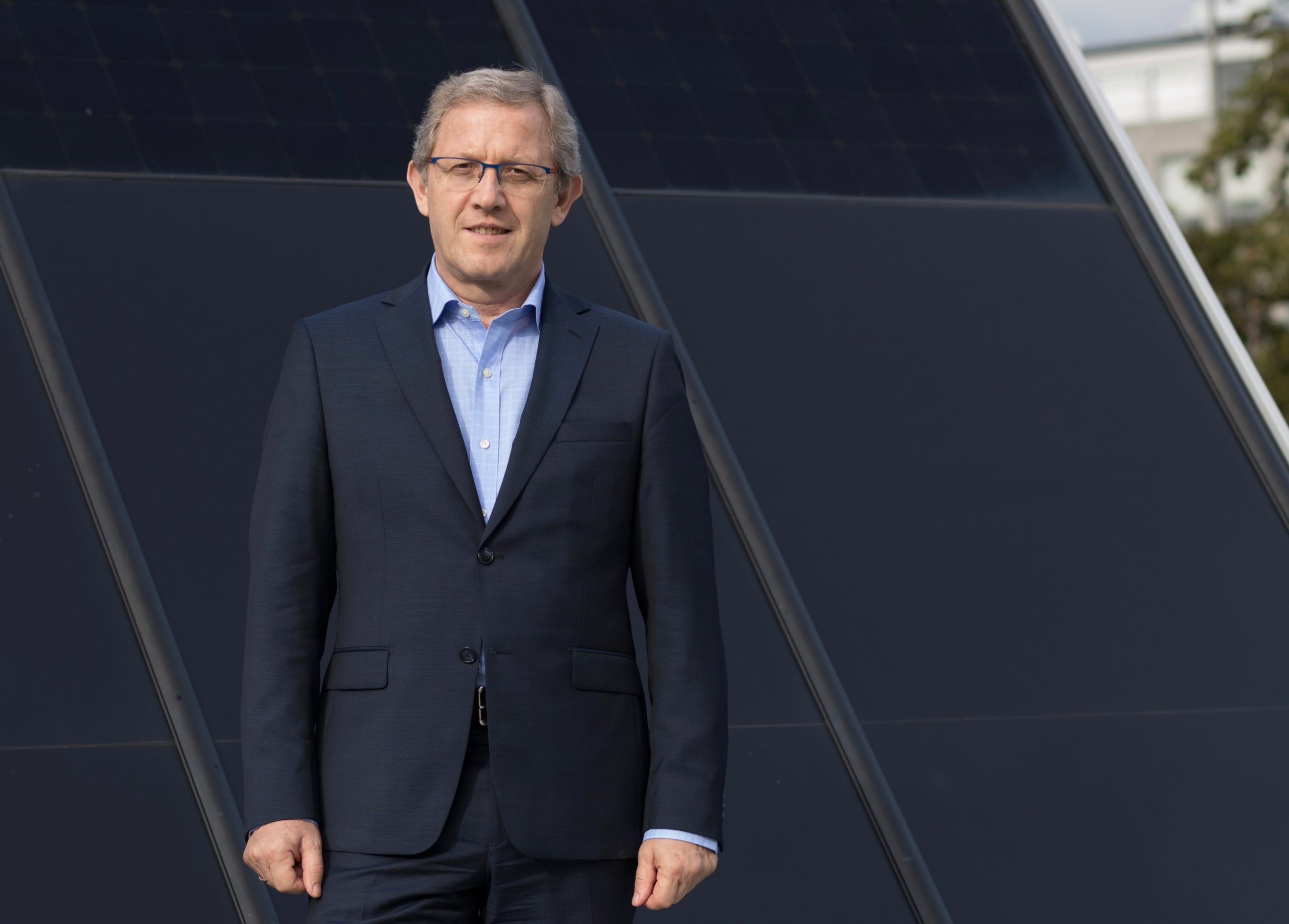The Netherlands is a leader in the development of direct current (DC). A good reason for an international conference on Bouwcampus. What does the future for DC look like?
Prof.dr.ir. Pavol Bauer (faculteit EWI) in front of his wireless Ebike station on solar energy.
Laptop, smartphone, electric car – everything you care about runs on direct current. Alternating current (AC) from a wall socket (230 Volt, 50 Hertz) is a legacy of the past when large rotating generators in gas or coal-fired power stations generated electricity. But as more energy comes from sun and wind – sources of direct current – the use of alternating current is becoming less and less self-evident.
The goal of the DC Summit 2020 (15 and 16 January 2020) is to share innovative DC projects from the Netherlands, Germany and Denmark with visitors from all over the world. Speakers will not only come from TU Delft but also from the Universities of Aachen and Kiel in Germany and Aalborg in Denmark.
Prof. Pavol Bauer, Professor in DC Systems, Energy Conversion and Energy Storage (Faculty of EWI) explains the most important developments.
What are the advantages of DC?
“With many systems, direct current is cheaper and simpler because it can run with fewer transformers. For example, LED lighting operates on a low DC voltage. Energy comes from the public grid (230 V alternating current), that requires conversion. Also, direct current has more capacity for electrical energy than alternating current. One solution to the power shortage in Amsterdam is to make the grid heavier by laying more cables and using transformers. This is costly and time-consuming. Another option is to use the existing cable for direct current. The capacity of the cable will then be 50% higher, in other words, more energy can pass through it.”
What are the three most important developments?
1. The most modern road in the Netherlands
“The Kruithuisweg (N470) will be the most modern road in the Netherlands. Solar cells on the side of the road will provide energy for street lighting and traffic lights. The cables were already laid in December and the road widened. The cable network will also be connected to the new Delft Campus station, which will also run on green energy.”
2. Ships
“DC voltage is already widely used on ships. At the conference Peter Rampen of Damen Shipyards will talk about his experiences with direct current on ships. Navy ships too partly use direct current.”
3. Smart networks
“We need to move from passive networks to active networks,” says Bauer. Trains, trams and trolleybuses already run on DC voltage, but these networks are passive – it’s one-way traffic from the source to the vehicle. In an active network, you could also charge electric cars, connect street lighting, add storage, and send the energy released when a vehicle brakes back into the network. Bauer asks “The network is already there so why shouldn’t we use it?” However, laws have to change as at the moment no one may use the NS’s 1,500 V DC network. Laws and regulations are also a topic for discussion at the DC Summit conference.”
How will the transition to direct current take place?
“The investments in the current public energy network are enormous. You can’t change that overnight. Part of DC’s growth will come from houses. As soon as solar panels are used to charge cars, the grid can be more easily extended to lighting houses. DC houses are already a reality, for example in the Green Village and in the Pulse building. There is still little demand for DC systems for homes as consumers are cautious. But public street lighting, and parking garages for charging electric cars are examples of good business cases where DC is cheaper. I see this happening in the future.”
Will the entire grid become direct current in the future?
“DC is not the solution for everything, only if it is economically and technically advantageous. In the future we will see many combinations of DC and AC.”
Sija van den Beukel / Freelance journalist



Comments are closed.